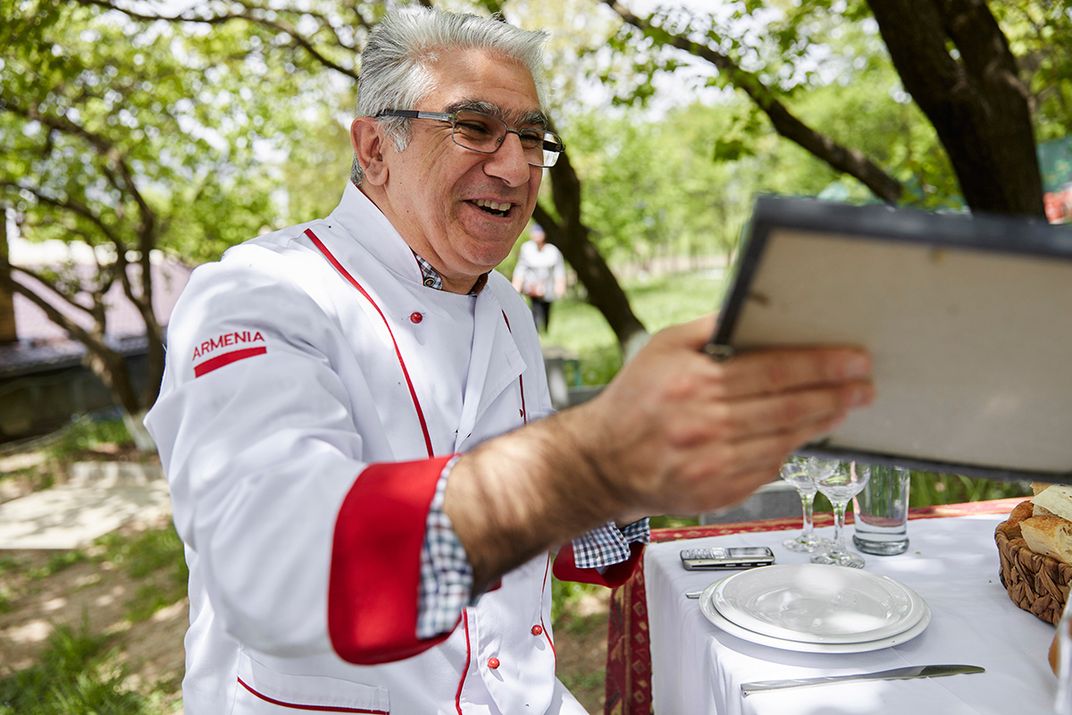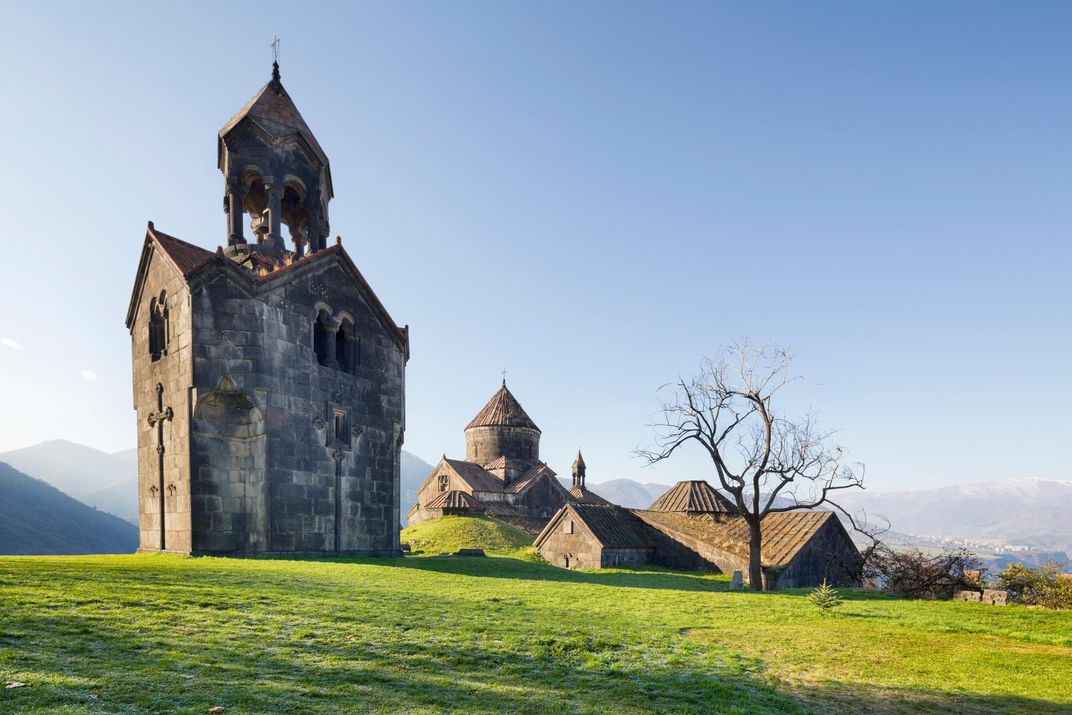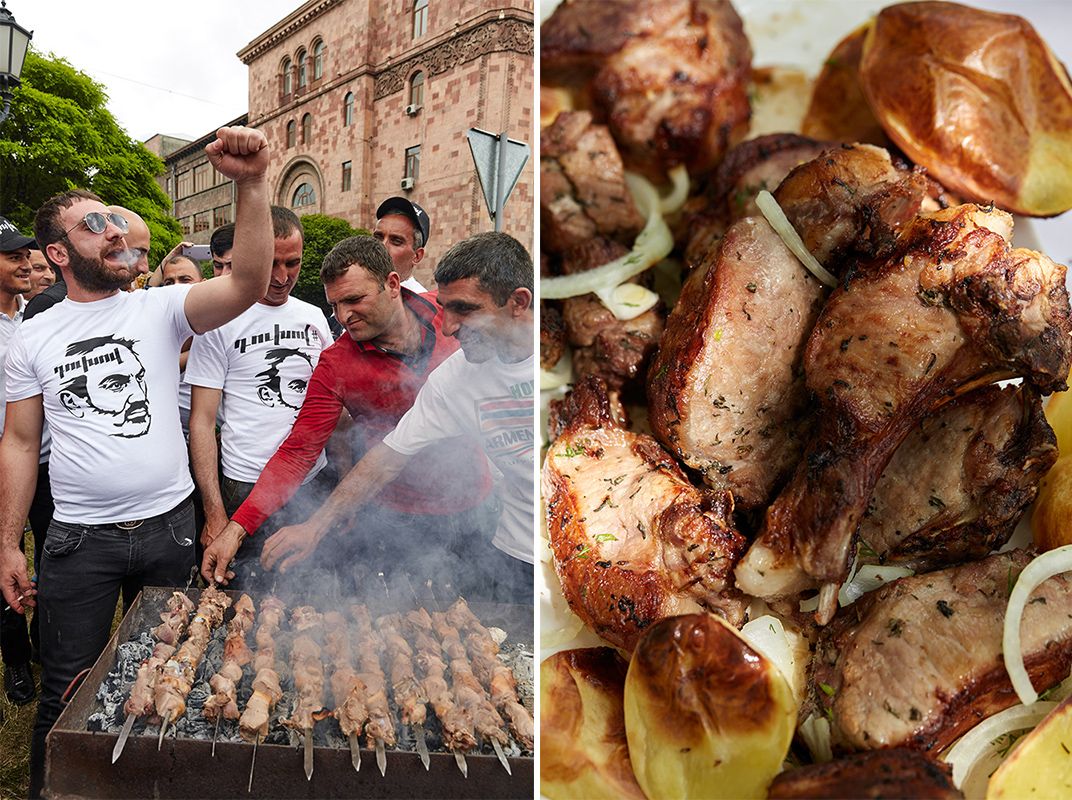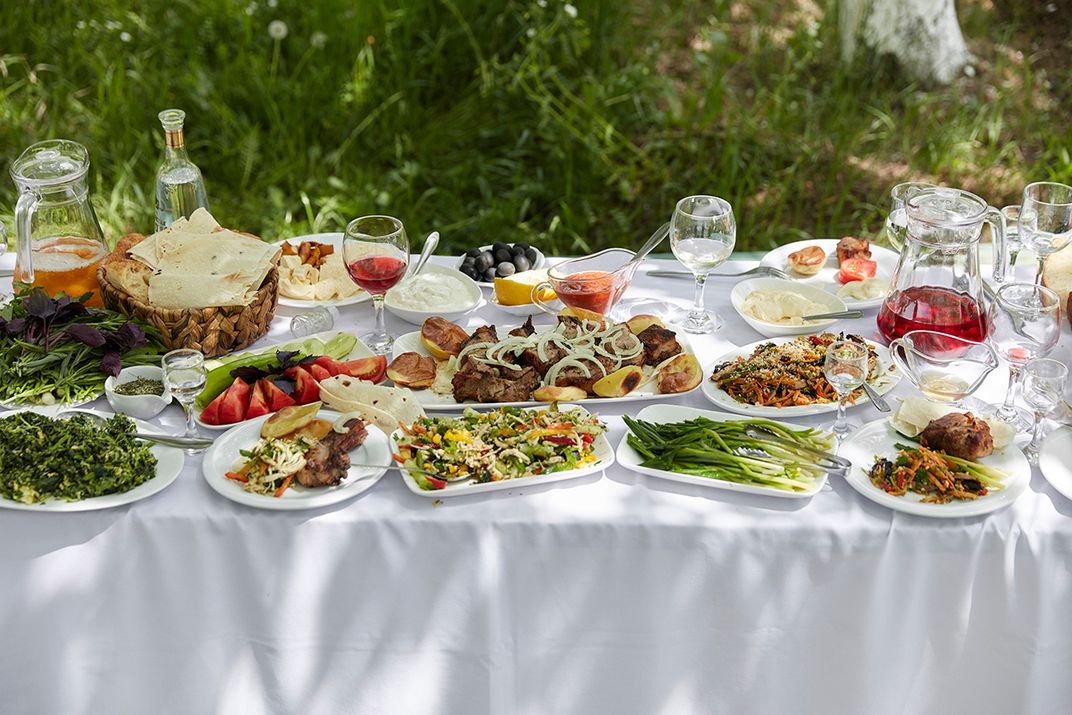Get to Know Khorovats, Armenia’s Favorite Grilling Pastime
/https://tf-cmsv2-smithsonianmag-media.s3.amazonaws.com/filer/b9/e0/b9e065fa-4118-4037-9f23-c6f2f4abd3e7/lavashthebook_khorovats_07.jpg)
Sitting on a cliff overlooking the Debed Gorge in northern Armenia, the Haghpat monastery is a stunning Unesco World Heritage Site worth the hair-raising tour bus ride up a mountain road. Yet the monastery’s ancient kitchen has stood empty for years, and the only other food option is a snack bar at the edge of the property.
It’s here that Armen Qefilyan saw an opportunity. Why not entertain these hungry tour groups with khorovats, Armenia’s favorite meat-grilled-on-a-stick tradition?
A Visit to Armen’s
Qefilyan isn’t just another khorovats hobbyist, of which there are countless in Armenia. In 2009, he was crowned champion in a national khorovats competition. After years of running a restaurant in the nearby copper mining town of Alaverdi, the chef’s newfound accolades allowed him to set his sights higher—straight up the mountain.
We paid Haghpat a visit this past May on a research trip across Armenia for our upcoming cookbook, Lavash. For the trip, co-authors Ara Zada, a Los Angeles-based chef; John Lee, a San Francisco-based photographer; and I, a San Francisco-based cookbook writer, teamed up with Christine Goroyan, a translator from Yerevan, and Raffi Youredjian, a childhood friend of Zada who had recently relocated to Armenia.
Youredjian was the one who had told us about Qefilyan—he had met the chef while writing Tour de Armenia, a book chronicling his cycling journey around Armenia. All Youredjian needed to say was “khorovats champion,” and we knew we had to make a stop at Armen’s, Qefilyan’s namesake restaurant.

We drove our dusty rental car down the long driveway and past a couple of tour buses before parking. Sure enough, the Italian tourists we had seen at Haghpat had already taken their seats in a big indoor dining hall. To the right of the entrance lay an open kitchen centered around a large mangal, a khorovats-style grill. The biggest difference between a mangal and an American-style grill is that there are no grates: cooks prop long skewers of meat and vegetables over either side of the grill, suspending the meat and vegetables directly over the embers.
Youredjian had called ahead to ask for a special table set outside for us, since the unpredictable weather of the Lori region seemed to be cooperating. Overlooking the gorge, our table under a tree was covered with linen and lined with plates. Pitchers of kompot and carafes of local vodka were ready for us to start toasting to our luck with lunch spots. Qefilyan joined us, and before the first plates of khorovats could arrive, I began firing questions (translated by Goroyan) to learn about his champion technique.

The Allure of Khorovats
While grilling meat on skewers is common around the world, in Armenia the act is taken on with rare passion.
Part of the reason has to do with scarcity: obtaining enough good-quality meat to grill was never guaranteed during Soviet times. It then became a rarity during the post-Soviet period of the 1990s, when even bread was scarce. These days, inviting people over for khorovats sends out the signal that life is good.

The celebratory nature of khorovats was on full display on May 8 when Nikol Pashinyan was elected prime minister. Traffic stopped in Yerevan to make room for one big street party. And the food that fueled the celebration? Khorovats. Partiers dragged their charcoal-fueled mangals into the streets and danced with skewers of meat in their hands.
That’s what makes khorovats easy to like: the equipment is low-tech, the preparation simple, and the char-grilled results a dependable way to soak up all that celebratory vodka.
How to Win a Khorovats Championship
There is a big gap between dragging a mangal into the street and cooking meat on it and becoming a khorovats champion.
Like barbecue enthusiasts across America, khorovats competitors take their technique seriously. Monitoring heat is crucial. While it’s not quite the low-and-slow technique favored in American barbecue, Qefilyan stressed the importance of a gentle fire. He said he holds his hand over the mangal and counts to twelve—if the fire is too hot for his hand, it’s too hot for the meat. This was unusual compared with khorovats we saw prepared elsewhere with flames licking the meat and charring the outsides.
We asked Qefilyan what he prepared for the competition. While pork is the most common meat for khorovats in Armenia (an influence carried over from Soviet times), he chose lamb, simply seasoning the chunks of meat with salt, paprika, black pepper, and thyme and threading a little lamb fat on the skewers between the meat for richness.
For nearly forty minutes, he cooked the meat, turning it frequently to cook evenly. To perfume the smoke, he went untraditional, spearing quince halves seasoned with allspice and clove onto rose hip branches. As the quince juice dripped into the coals, he explained, the smoke seasoned the meat.

When it came to presentation, he stuck with tradition, laying out a sheet of lavash and arranging the meat on top, then decorating with pomegranate seeds. It wasn’t the decoration that won him the top prize, though—it was the flavor.
By then, platters of khorovats had started to arrive at our table, and we turned our attention to the chunks of pork mixed with sliced onion, the sides of salads and cheese, and the basket of lavash. It was time to dig in—after we toasted our champion host.
Kate Leahy is a freelance journalist, cookbook author, and recipe developer. Her next book, Lavash, created with fellow Armenian food enthusiasts John Lee and Ara Zada, will be released by Chronicle Books in fall 2019. This story originally appeared on the Smithsonian Folklife Festival blog.